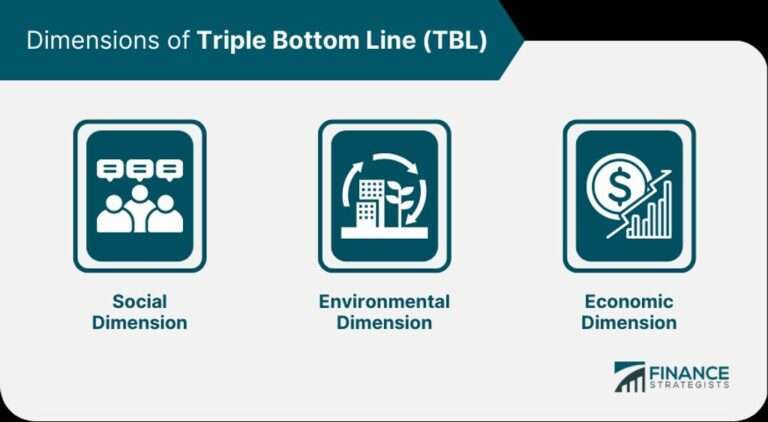How Lead Generation and Marketing Automation Work Together

In today’s digital world, businesses are constantly searching for ways to generate leads and convert them into customers. Lead generation and marketing automation are two powerful strategies that go hand in hand to achieve this goal. While lead generation focuses on attracting and capturing potential customers, marketing automation takes the lead nurturing process to the next level. In this blog post, we will explore the basics of lead generation and marketing automation, their individual benefits, and how they work together to maximize results. We will also delve into real-world examples and case studies to illustrate the successful integration of these two strategies. So, if you’re looking to supercharge your lead generation efforts and streamline your marketing processes, read on to discover how lead generation and marketing automation can work together to drive growth for your business.
Understanding the Basics: Lead Generation and Marketing Automation
Lead Generation and marketing automation are two essential components of a successful marketing strategy. In this section, we will delve into the basics of lead generation and marketing automation, providing a clear understanding of their individual roles and how they contribute to overall business growth.
Definition and Importance of Lead Generation
To put it simply, lead generation refers to the process of attracting and capturing potential customers who have shown interest in your products or services. These potential customers, known as leads, are individuals or businesses that have expressed some level of interest in what your company has to offer. The ultimate goal of lead generation is to convert these leads into paying customers.
Lead generation is of paramount importance for any business, regardless of its size or industry. By generating quality leads, businesses can increase their customer base, drive revenue growth, and gain a competitive edge in the market. It allows businesses to identify potential customers who are most likely to convert, enabling targeted marketing efforts and more effective sales strategies.
Different Methods for Lead Generation
There are various methods and channels through which businesses can generate leads. Some common lead generation methods include:
- Content Marketing: Creating valuable and informative content, such as blog posts, e-books, whitepapers, and videos, to attract and engage potential customers.
- Social Media Marketing: Leveraging popular social media platforms like Facebook, Twitter, LinkedIn, and Instagram to reach and engage with a wider audience.
- Search Engine Optimization (SEO): Optimizing your website and its content to rank higher in search engine results, increasing visibility and attracting organic traffic.
- Email Marketing: Building an email list and sending targeted, personalized emails to nurture leads and drive conversions.
- Paid Advertising: Running paid ads on search engines, social media platforms, or other websites to reach a larger audience and drive traffic to your website.
Each method has its own advantages and effectiveness, and businesses often use a combination of these strategies to generate leads.
How Quality Over Quantity Matters in Lead Generation
While it’s important to generate a significant number of leads, quality should always take precedence over quantity. It’s not just about attracting any lead, but attracting the right leads – those who are genuinely interested in your products or services and have a higher chance of converting into customers.
Focusing on quality leads helps businesses make the most of their resources and efforts. By targeting the right audience, businesses can increase the chances of lead conversion, improve customer satisfaction, and enhance long-term customer relationships. It’s better to have a smaller number of high-quality leads that are more likely to convert, rather than a large number of low-quality leads that may not yield desirable results.
In the next section, we will explore marketing automation and its significance in streamlining lead nurturing processes. Stay tuned to understand how marketing automation can enhance your lead generation efforts and maximize conversions.
What is Lead Generation and Why is it Important
Lead generation is the process of attracting and capturing potential customers who have shown interest in your products or services. In this section, we will dive deeper into the concept of lead generation, its importance for businesses, and the benefits it brings.
Definition of Lead Generation
Lead generation involves various marketing strategies and tactics aimed at identifying and capturing individuals or businesses who have the potential to become customers. It focuses on creating awareness, generating interest, and engaging with target audiences to convert them into leads. These leads are individuals who have shown some level of interest or interaction with your brand, whether it’s through website visits, content downloads, newsletter sign-ups, or social media engagement.
Importance of Lead Generation
Lead generation plays a crucial role in the success of any business. Here are some key reasons why lead generation is important:
- Increased Customer Base: Lead generation allows businesses to expand their customer base by attracting and converting potential customers. By continuously generating leads, businesses can nurture relationships and increase their chances of converting leads into paying customers.
- Enhanced Sales and Revenue: With a consistent stream of quality leads, businesses have a higher chance of closing sales and generating revenue. By focusing on lead generation efforts, businesses can optimize their sales process and increase their conversion rates.
- Targeted Marketing Efforts: Lead generation enables businesses to target specific audiences who are more likely to be interested in their products or services. This targeted approach helps businesses optimize their marketing efforts, save resources, and maximize the return on investment (ROI).
- Customer Relationship Building: Lead generation is not just about acquiring new customers; it also focuses on building and nurturing relationships with potential customers. By engaging with leads through personalized communication and valuable content, businesses can establish trust, credibility, and long-term customer loyalty.
- Market Research and Insights: Lead generation provides businesses with valuable insights into their target audience. By understanding the preferences, behaviors, and pain points of potential customers, businesses can refine their marketing strategies, tailor their offerings, and stay ahead of the competition.
- Adaptability and Growth: Lead generation allows businesses to adapt to changing market dynamics and customer preferences. By continuously generating leads, businesses can identify emerging trends, adjust their marketing strategies, and seize new opportunities for growth.
In summary, lead generation is essential for businesses as it helps expand the customer base, increase sales and revenue, optimize marketing efforts, build customer relationships, gain market insights, and foster adaptability and growth. In the next section, we will explore different methods and strategies for effective lead generation. Stay tuned to discover actionable tips to generate quality leads for your business.
Understanding Marketing Automation and its Benefits
Marketing automation is a powerful tool that streamlines and automates marketing tasks and processes, allowing businesses to effectively nurture leads and drive conversions. In this section, we will explore the concept of marketing automation, its benefits, and how it can revolutionize your marketing efforts.
Definition of Marketing Automation
Marketing automation refers to the use of technology and software to automate repetitive marketing tasks and workflows. It enables businesses to streamline their marketing processes, personalize communication with leads and customers, and deliver targeted messages at the right time. Marketing automation platforms provide a centralized system that integrates various marketing channels and automates actions based on predefined rules and triggers.
Benefits of Marketing Automation
Implementing marketing automation offers several benefits for businesses. Let’s take a closer look at some of the key advantages:
- Time and Resource Efficiency: Marketing automation reduces the manual workload by automating repetitive tasks, such as lead nurturing emails, social media posting, and data segmentation. This frees up valuable time for marketers to focus on strategic planning and creative initiatives.
- Personalized and Targeted Communication: Marketing automation allows businesses to deliver personalized messages to leads and customers based on their behavior, interests, and preferences. By tailoring communication, businesses can build stronger relationships and increase engagement with their audience.
- Lead Nurturing and Conversion: Marketing automation enables businesses to nurture leads throughout the buying journey. With automated workflows and personalized content, businesses can deliver the right information at the right time, guiding leads towards making a purchase decision.
- Improved Lead Scoring and Qualification: Marketing automation platforms often include lead scoring capabilities, which assign a value to leads based on their behavior and engagement. This helps businesses prioritize leads and focus their efforts on those with the highest potential for conversion.
- Enhanced Sales and Marketing Alignment: Marketing automation bridges the gap between marketing and sales teams by providing them with a unified platform for collaboration. It allows for better lead handoff, improved communication, and shared insights, leading to more effective lead conversion and revenue generation.
- Data-driven Decision Making: Marketing automation provides valuable data and analytics on various marketing activities. Businesses can track and measure the performance of campaigns, identify areas for improvement, and make data-driven decisions to optimize their marketing strategies.
- Scalability and Growth: Marketing automation is scalable, making it suitable for businesses of all sizes. Whether you’re a small startup or a large enterprise, marketing automation can accommodate your needs and support your growth objectives.
In the next section, we will explore best practices in marketing automation to help you make the most of this powerful tool. Stay tuned to discover actionable tips and strategies for successful implementation.
How Lead Generation and Marketing Automation Work Together
Lead generation and marketing automation are two interconnected strategies that complement each other to drive optimal results. In this section, we will explore how lead generation and marketing automation work together, leveraging each other’s strengths to maximize conversions and revenue.
The Role of Marketing Automation in Lead Generation
Marketing automation plays a crucial role in optimizing lead generation efforts. Here’s how:
- Capturing and Managing Leads: Marketing automation platforms provide tools for capturing leads through various channels, such as website forms, landing pages, and lead magnets. Once captured, the platform enables businesses to store and manage lead data efficiently, ensuring no potential leads slip through the cracks.
- Lead Nurturing: Marketing automation allows businesses to nurture leads effectively through automated workflows. By setting up personalized drip campaigns, businesses can deliver targeted content and messages to leads at different stages of the buying process, building trust and keeping them engaged.
- Lead Scoring and Qualification: Marketing automation platforms often include lead scoring capabilities, which assign a value to leads based on their behavior, demographics, and engagement with marketing efforts. This scoring system helps businesses identify and prioritize high-quality leads, ensuring that sales efforts are focused on the most promising prospects.
- Behavioral Tracking and Personalization: Marketing automation platforms track lead behavior and interactions, providing valuable insights into their interests and preferences. Businesses can use this data to personalize communication and tailor content to individual leads, enhancing engagement and increasing the chances of conversion.
- Segmentation and Targeting: Marketing automation allows businesses to segment their leads based on various criteria, such as demographics, interests, or engagement level. This segmentation enables targeted marketing efforts, delivering relevant messages to specific segments and increasing the likelihood of conversion.
How Marketing Automation Helps in Nurturing Leads
Marketing automation is instrumental in nurturing leads throughout their buyer’s journey. Here’s how it facilitates effective lead nurturing:
- Automated Drip Campaigns: Marketing automation platforms enable businesses to set up automated drip campaigns that deliver a series of relevant and timely messages to leads. These campaigns can be tailored to different segments and stages of the buying process, nurturing leads and guiding them towards making a purchase decision.
- Personalized Content Delivery: With marketing automation, businesses can deliver personalized content to leads based on their preferences and behavior. By providing valuable and targeted content, businesses can build credibility, establish themselves as industry experts, and keep leads engaged throughout the nurturing process.
- Lead Engagement and Interaction: Marketing automation platforms facilitate lead engagement by automating actions based on lead behavior. For example, if a lead clicks on a specific link in an email, the platform can trigger a follow-up action, such as sending additional relevant content or notifying a sales representative to reach out.
- Lead Handoff to Sales: Marketing automation ensures a seamless handoff of leads to the sales team. Through lead scoring and qualification, marketing automation platforms identify when a lead is deemed ready for sales engagement. This helps streamline the sales process, enabling sales representatives to focus their efforts on leads that are most likely to convert.
Strategies to Integrate Lead Generation and Marketing Automation
To effectively integrate lead generation and marketing automation, consider the following strategies:
- Align Marketing and Sales Efforts: Foster collaboration and communication between marketing and sales teams to ensure a seamless transition of leads from marketing automation to the sales pipeline. Define clear lead handoff criteria and establish a feedback loop to continuously optimize the lead generation and nurturing process.
- Create Compelling Lead Magnets: Develop valuable and relevant lead magnets, such as e-books, webinars, or free trials, to attract potential customers. Use marketing automation to automate the delivery of these lead magnets and capture lead information in exchange.
- Implement Lead Scoring and Segmentation: Utilize lead scoring and segmentation capabilities of your marketing automation platform to prioritize leads and deliver personalized content. Segment leads based on demographics, behavior, or engagement level to tailor your marketing efforts and increase the chances of conversion.
- Leverage Personalization and Behavioral Tracking: Use the data collected by your marketing automation platform to personalize communication with leads. Deliver targeted content based on lead behavior and preferences to enhance engagement and build stronger relationships.
- Continuously Optimize and Test: Regularly analyze the performance of your lead generation and marketing automation efforts. Monitor key metrics such as conversion rates, engagement rates, and lead quality. Experiment with different approaches, A/B test your campaigns, and iterate based on the insights gained.
By integrating lead generation and marketing automation, businesses can streamline their marketing efforts, nurture leads effectively, and increase conversions. In the next section, we will explore real-world examples and case studies to illustrate the successful integration of these strategies. Stay tuned to gain valuable insights and learnings from these practical examples.
Real-world Examples and Case Studies
Real-world examples and case studies provide valuable insights into how businesses have successfully integrated lead generation and marketing automation to drive growth. In this section, we will explore some notable examples and their learnings.
Successful Uses of Marketing Automation in Lead Generation
- Example: Company X, an e-commerce retailer, implemented marketing automation to improve their lead generation efforts. They set up automated workflows to capture leads through their website, segment them based on browsing behavior, and deliver personalized product recommendations. By leveraging marketing automation, Company X saw a significant increase in lead conversion rates and revenue.
Key Learnings: Personalization and timely communication can greatly enhance lead generation efforts. By using marketing automation to deliver tailored content and product recommendations, businesses can engage leads and drive conversions.
- Example: Company Y, a B2B software provider, used marketing automation to streamline their lead nurturing process. They created a series of automated email campaigns that delivered targeted content to leads based on their industry and role. By nurturing leads with valuable content, Company Y saw a higher engagement rate and an increase in qualified leads.
Key Learnings: Effective lead nurturing requires delivering relevant content at the right time. By leveraging marketing automation to send targeted emails based on lead attributes, businesses can nurture leads and move them closer to making a purchase decision.
Case Studies of Companies Excelling in Both Areas
- Case Study: Company Z, a SaaS company, integrated lead generation and marketing automation to drive growth. They implemented lead capture forms on their website, offering a free trial of their software. Through marketing automation, they nurtured leads with personalized onboarding emails, product tutorials, and case studies. As a result, Company Z experienced a significant increase in trial-to-paid conversions and achieved sustainable growth.
Key Learnings: Combining lead generation and marketing automation can lead to substantial business growth. By capturing leads through compelling offers and nurturing them with personalized content, businesses can increase conversions and drive long-term success.
- Case Study: Company W, a marketing agency, utilized marketing automation to optimize their lead generation and sales process. They implemented lead scoring and qualification criteria, allowing their sales team to focus on the most promising leads. By integrating their CRM with marketing automation, they ensured seamless lead handoff and real-time tracking of lead engagement. This resulted in improved sales efficiency and revenue growth for Company W.
Key Learnings: Integrating marketing automation with customer relationship management (CRM) systems enhances lead management and sales effectiveness. By automating lead scoring and qualification, businesses can prioritize their sales efforts and achieve better conversion rates.
Learnings from these Case Studies
The examples and case studies mentioned above highlight some key learnings when it comes to integrating lead generation and marketing automation:
- Personalization is Key: Tailoring communication and content to individual leads based on their preferences and behaviors significantly improves engagement and conversion rates.
- Timely and Relevant Messaging: Delivering the right message at the right time in a lead’s journey is crucial for nurturing and guiding them towards conversion.
- Lead Scoring and Qualification: Prioritizing leads based on their readiness to convert helps optimize sales efforts and improve overall conversion rates.
- Seamless Sales and Marketing Alignment: Collaboration and effective communication between the sales and marketing teams ensure a smooth lead handoff process and maximize conversion opportunities.
- Continuous Optimization and Testing: Regularly analyzing and optimizing lead generation and marketing automation efforts based on data-driven insights is essential for long-term success.
By understanding these learnings and applying them to your own business, you can harness the power of lead generation and marketing automation to drive growth and achieve your business goals.
In conclusion, the integration of lead generation and marketing automation offers immense potential for businesses to attract, nurture, and convert leads into customers. By leveraging real-world examples and case studies, businesses can learn from successful implementations and apply strategies that align with their unique needs and objectives. Implementing these strategies, along with continuous optimization and testing, will pave the way for sustainable growth and success in the digital marketplace.






